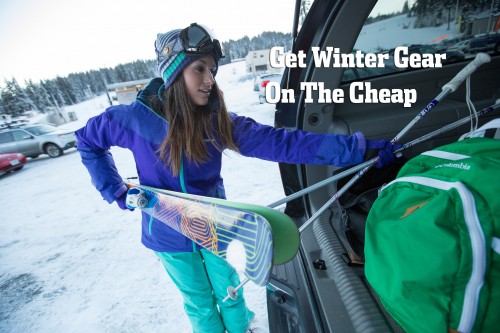Gearing up for skiing, snowboarding, snowshoeing, or winter hiking doesn’t have to break the bank. From early October through November, there are gear swaps across the country where you can buy gently used equipment for pennies on the dollar, many of them from high-end brands.
Here are some tips on how to get the most out of these events.
Before the Swap
Check to see if you can volunteer at your local swap. Volunteers generally get to see the equipment before the public does—most ski swaps have a volunteers-only evening to reward everyone who has helped. This gives you the chance to find the best deals (and avoid standing in line).
-Get to the swap early with your list in hand. The trouble with snow sport swaps are that there is usually tons of equipment. Write down exactly what you are looking for and find a volunteer to help. Once you’ve found what you need, then you can browse through the interesting hardwear and accessories that you might want to try.
-Spend some time reviewing what gear you have and what you’ll need for the upcoming season. If you have children, pull out last season’s gear and try it on. Try on your own gear. Make a list of essentials that you’ll need to replace. Make sure to check out the conditions of helmets, skis/board and bindings.
If you’ve outgrown equipment that is still in good condition, bring it to the swap to sell it. Most swaps have several set-up days preceding the big event where you can drop off gear. Just make sure it is in good condition—the volunteers will help you price the gear. If it sells, you’ll generally get about 75 percent of the asking price. If it doesn’t sell, you can donate it to charity.
During the Swap
-If you are looking for Nordic or skate ski boots, double check the binding system on your existing skis. You’ll want to buy boots that fit your existing bindings—take a photo (so you don’t have to bring your skis), or bring your old boots.
-Do you homework before you go, as once you’re familiar with brands, chances are much better that you’ll buy exactly what you need. Keep in mind that technology in boots, skis, and bindings keeps moving forward and that there are a lot of options. Visit your local ski and board shops to get an idea of what new equipment costs, and brands that you like. Figure out in advance what type of ski or boot you prefer—are you looking for an all-mountain ski or board, or will you stick to the groomers? If you know that you are looking for a pair of 165cm twin tip skis with a 110 waist or a reverse camber board, it will make things much less confusing when you’re shopping.
-Bring your smartphone to the swap. If you have connectivity, you can search the web for a particular brand and model name to find out if the ski, board, or jacket works for your needs.
Expand your horizons and pick up a new sport. Swaps are great places to find gear for an activity you’ve always wanted to do, but haven’t gotten around to trying.
Always check equipment to make sure it is in good condition before you buy. Check the base (bottom) of skis to make sure there aren’t big gouges. If you’re buying apparel, check the seams and lining to make sure there aren’t any catastrophic failures.
After the Swap
Always bring second-hand equipment into an authorized ski and board shop to be checked for safety. This is especially important for bindings that will need to be adjusted and set for your boot length and your weight. Most alpine ski boots are made so that a boot fitter can work on them to increase performance and comfort. You’ll have saved money on the gear—so before you use it make sure you customize it. A boot-fitting session costs about $30 and the difference it makes is amazing. Used skis can be tuned and waxed for about the same amount; you’ll start the season with sharp edges, a smooth base, and bindings that are set for your ability and weight.
Find a Ski and Board Swap
The internet makes it easy—a search for “Ski Swap” or “Snow Sports Swap” with your town name should do the trick. Mountain towns generally have the most robust swaps as locals tend to buy and sell equipment at a faster rate than people further from the snow. College towns also have big equipment sales in the fall, so don’t be afraid to widen the radius—you may end up saving a bundle.



















Comments